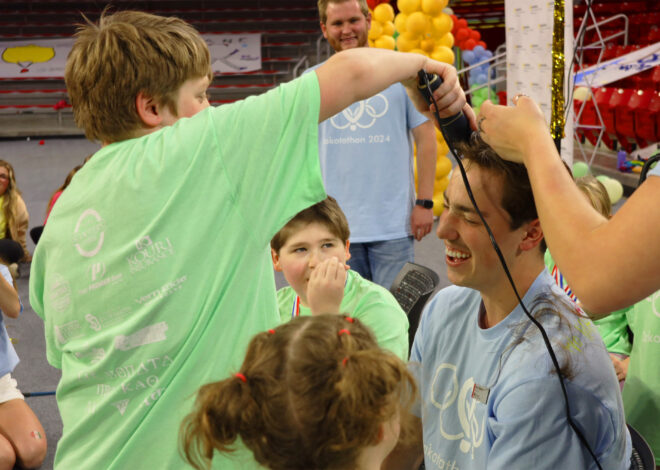Dispatches from the CDC: A garden for USD
This is the sixth installment of a series recording the experiences of students and faculty involved with the Center for Diversity and Community (CDC). The series seeks to highlight why this organization was so impactful on the USD community and why the CDC was more than the sum of its parts.
“This is the search for identity, that search for friendship, the need for young people to be together. It’s too big to be permanently smothered by this taking away of space,” Cindy Struckman-Johnson said.
Struckman-Johnson works in the psychology department at USD and has taught at USD since 1980. In 1989 she started the Gay Alliance, the group that would become Spectrum. Struckman-Johnson said she remembers when the Gay Alliance was being welcomed by the USD administration while at the same time facing criticism from faculty and the campus community.
“I was reminded of this in a talk with Susan Wolf…but she remembered that when she took over that Betty Turner Asher invited Spectrum, or the Gay Alliance, over for pizza at the president’s house, when she was president and so that was really special. And Jim Abbott was a strong supporter. I remember him attending, not a meeting, but there were events that were being put on by the Gay Alliance and he attended and was a strong supporter,” Struckman-Johnson said.
The CDC was a place where friendships were allowed to flourish, Struckman-Johnson said this is because it was a very convenient place for acquaintanceships to grow. Acquaintanceships happen when people first come together and they begin finding similarities between each other.
“According to social psychology, that will draw you together when you find your similarities. And yet there’s another force that will happen as you become more acquainted, and that is, you find your differences and the differences possibly can drive you apart,” Struckman-Johnson said. “If you don’t have common ground to really work on a relationship, the differences can drive you apart. But yet, if you come to understand the differences, it can draw you back together again.”
Struckman-Johnson said the celebration of both, similarities and differences, is what creates diversity.
“Through acquaintanceship you will find that you are different now. You’re culturally different, your sexual preferences are different, your background, your ancestral background will be different and that this is the other half of diversity is finding out about difference and then learning to appreciate it,” Struckman-Johnson said. “And so you’ve got your similarity over here and you’re celebrating the similarity here and you’re celebrating difference over here, and they go together. The two of them create diversity so it’s always a dual process of coming together, knowing and being similar and then understanding and celebrating differences.”
Throughout her years at the university, Struckman-Johnson said she has been an observer and ally of the CDC, and has helped with activities and programs in the past.
“Over the years I’ve been invited to some of the activities up in the room and they had to do sometimes with gender, politics, sexual assault, quite a few programs up (in the CDC). ICARE programs were held up here, and then (I) just watched and observed the growth of Spectrum and then the blooming of a climate on campus around diversity that I just couldn’t imagine (happening) 15 years ago,” Struckman-Johnson said. “All of a sudden there it was, I don’t know if it was sudden, but it was fast. It was like somebody planted a garden up here and all these kids from everywhere are coming out and meeting.”
Struckman-Johnson, as a social psychologist, said she saw how much the CDC offered students, especially in friendships and as a sort of therapy for mental health, which she said disproportionately affected people in the LGBTQ community.
“In retrospect, what the CDC was doing was mental health counseling,” Struckman-Johnson said. “…But sort of beyond friendship, it was helping (students) deal with their depression and for Spectrum, that was critical.”
Beyond the loss of a social support system is the loss of a safe space, Struckman-Johnson said. She continues to advocate for Spectrum and the other groups formerly housed in CDC and their need for a designated space on campus because these organizations focus on marginalized and vulnerable populations
“(The university) is letting these kids literally suffer and experience all the things that are happening to kids all across the country and denying them a basic humanitarian facility to meet and help each other. And it’s just stunning to me that it’s happened and continues to happen. So, I would ask for a homeroom for Spectrum and I think the other groups need something like that, a space where they can meet and know that somebody is going to be there,” Struckman-Johnson said.
Ultimately, Struckman-Johnson is confident that students will continue to be themselves and find each other, but the CDC was a loss to the students and the university.
“I believe that students have been sacrificed. And this is where it gets tricky and political, but not all students at USD are sacrificed. Our athletes, thank goodness and I’m very happy for them, are taken care of. But they’re on a higher value apparently, than these other students,” Struckman-Johnson said. “The student athletes bring their talent to our university and then so what do students (with) differences (bring)? They bring their difference, and their difference makes USD a better place.”


